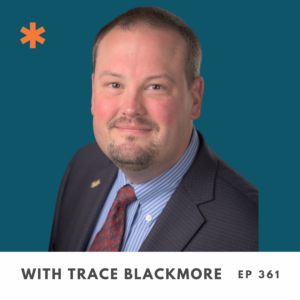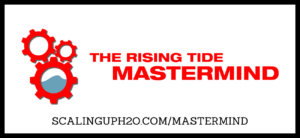 “I have never regretted having too much data when collecting a sample.” – Trace Blackmore
“I have never regretted having too much data when collecting a sample.” – Trace Blackmore
In this insightful episode of Scaling UP! H2O, join your host Trace Blackmore as he helps water professionals scale up their water testing knowledge, addressing listener questions and providing invaluable expertise for water treatment professionals.
Water testing stands as a cornerstone of effective water treatment, and Trace serves as your guide through this vital terrain. With a wealth of expertise, he addresses listener questions, offering invaluable insights to elevate the practices of water treatment professionals.
Trace’s guidance spans essential topics, from analyzing water samples to deciphering past data and ensuring the precision of collected samples. His pragmatic approach unveils indispensable tips for securing quality samples, choosing suitable tests for labs, and mastering sample preparation techniques.
Listeners will find clarity on concepts such as grab and composite samples, quantitative versus qualitative analysis, and the pivotal role of lab procedures in securing accurate results. Trace’s exploration extends to the comparison between tests conducted with test kits versus labs, alongside illuminating insights into specialized tests like Legionella testing and titration manipulation.
Through engaging dialogue and expert advice, Trace underscores the significance of meticulous data collection and adherence to lab protocols. This episode serves as a catalyst for water professionals, empowering them to refine their testing methodologies and optimize water treatment strategies.
Join Trace Blackmore on this enlightening expedition into the realm of water testing, where every lesson learned enhances practical expertise, and every insight gained fuels professional growth. Tune in to Scaling UP! H2O, and let’s scale up our knowledge together.
Timestamps
01:00 – Upcoming Events for Water Treatment Professionals
08:00 – Trace Blackmore answers listener questions about Testing on this informative Pinks and Blues episode
40:00 – Drop by Drop With James McDonald
Quotes
“It’s not just collecting samples, it’s about collecting data around those samples. I always take a picture of what I’m taking the scale off of and what is around it. I reference the photos so that when I get the report back, I can do more analysis.” – Trace Blackmore
“I have never regretted having too much data when collecting a sample.” – Trace Blackmore
“Collect all the data that you can, when you can.” – Trace Blackmore
“Learn what your lab needs from you before sending them your samples, and follow your lab’s procedures. The procedures are there to help you.” – Trace Blackmore
Connect with Scaling UP! H2O
Email Producer: corrine@blackmore-enterprises.com
Submit a show idea: Submit a Show Idea
LinkedIn: linkedin.com/in/traceblackmore/
YouTube: @ScalingUpH2O
Links Mentioned
244 The One About Water Treaters For Clean Water (with Steve Spear)
294 The One About Getting Involved so the Profession Can Grow (with John A. Mullen)
348 Credentials and Codes: Plumbing Strategies Against Legionella (with Christoph Lohr)
Blackmore Enterprises, Inc. Testing Services
Scaling UP! H2O’s Legionella Resources Page
Scaling UP! H2O Academy video courses
AWT (Association of Water Technologies)
Drop By Drop with James
In today’s segment, I have another challenge for you. Today’s challenge is…draw a process flow diagram for your water systems. Having a good process flow diagram will help both you and your customer. The exercise may correct some assumptions you have or open your eyes to challenges you never knew existed.
Be sure to include chemical feed points, water meters, blowdown lines, valves, waste streams, pretreatment equipment, pretreatment equipment waste streams, boilers, cooling towers, chillers, closed loops, dead legs, pressure and temperature gauge locations, pH probes, controllers, heat exchangers, makeup lines, outfalls, and whatever else you may run across. Feel free to make notes about frequency of equipment rotation, flow rates, temperatures, pressures, etc.
Lastly, hand-drawn diagrams can be just fine because ANY process flow diagram has got to be better than NO process flow diagram, right? No need to get fancy if that will just slow you down and prevent you from making process flow diagrams in the first place.
2024 Events for Water Professionals
Check out our Scaling UP! H2O Events Calendar where we’ve listed every event Water Treaters should be aware of by clicking HERE or using the dropdown menu.


